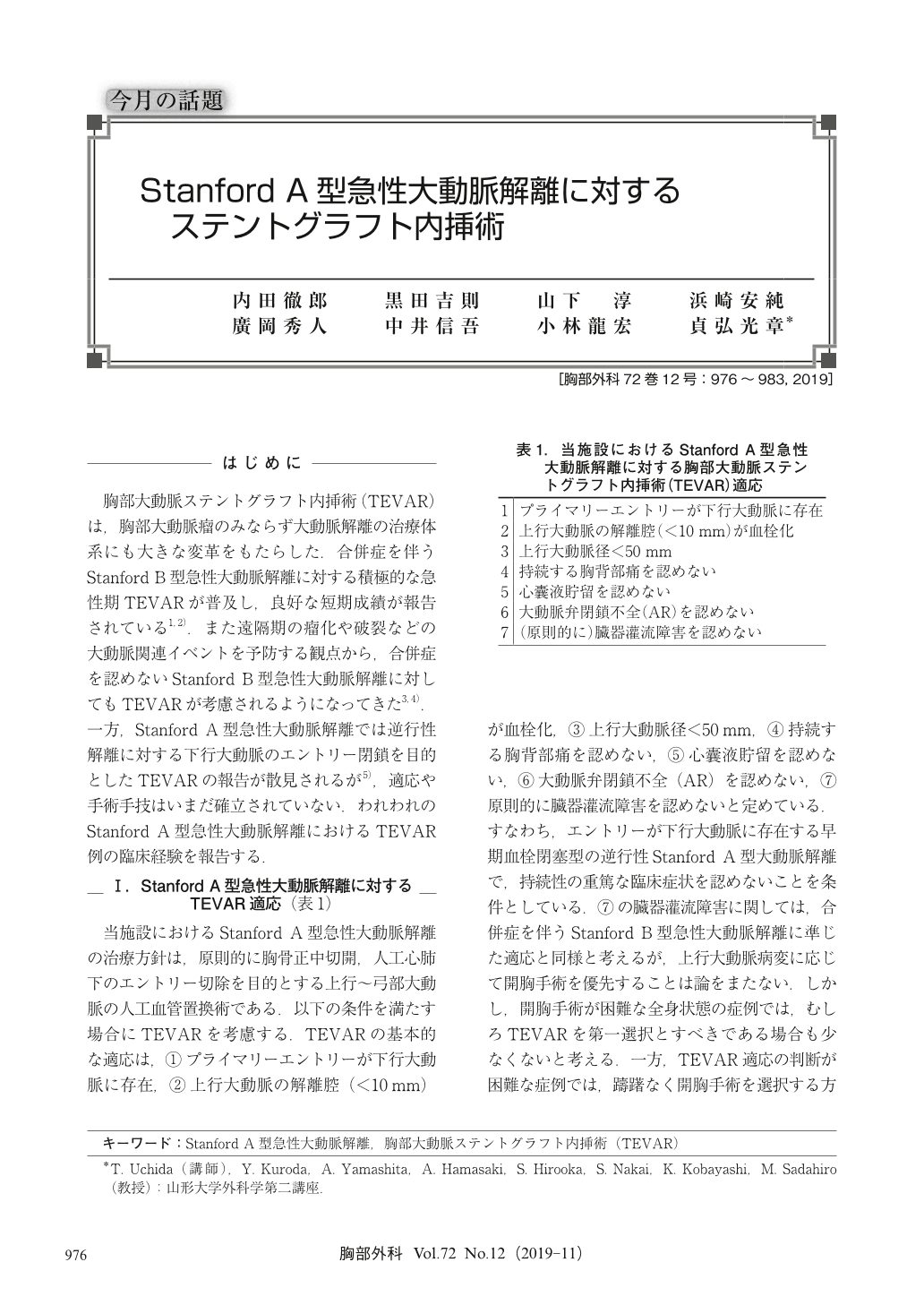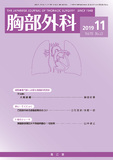Japanese
English
- 有料閲覧
- Abstract 文献概要
- 1ページ目 Look Inside
- 参考文献 Reference
胸部大動脈ステントグラフト内挿術(TEVAR)は,胸部大動脈瘤のみならず大動脈解離の治療体系にも大きな変革をもたらした.合併症を伴うStanford B型急性大動脈解離に対する積極的な急性期TEVARが普及し,良好な短期成績が報告されている1,2).また遠隔期の瘤化や破裂などの大動脈関連イベントを予防する観点から,合併症を認めないStanford B型急性大動脈解離に対してもTEVARが考慮されるようになってきた3,4).一方,Stanford A型急性大動脈解離では逆行性解離に対する下行大動脈のエントリー閉鎖を目的としたTEVARの報告が散見されるが5),適応や手術手技はいまだ確立されていない.われわれのStanford A型急性大動脈解離におけるTEVAR例の臨床経験を報告する.
Backgrounds:Recently, thoracic endovascular aortic repair (TEVAR) is widely accepted and performed in patients with complicated and uncomplicated Stanford type B aortic dissection. However, TEVAR for Stanford type A aortic dissection is not commonly performed even in the endovascular era. This report describes patients who underwent TEVAR for Stanford type A dissection.
Patients:Since 2016, 5 patients underwent TEVAR for retrograde acute Stanford type A dissection. A covered stent-graft was placed in the descending aorta for primary entry coverage. An additional bare-stent was placed in the narrowed true lumen of the downstream aorta. A thrombosed false lumen was observed in 4 and a partially thrombosed lumen in 1 patient. No patient showed pericardial effusion, aortic insufficiency, or persistent back pain. Four of 5 patients were asymptomatic, and only 1 patient developed multiorgan malperfusion. Repetitive computed tomography (CT) was performed postoperatively.
Results:All patients underwent successful TEVAR without the need for additional intervention, and no operative mortality and morbidity were observed. The patient with multiorgan malperfusion recovered uneventfully without any complication. Follow-up CT revealed complete disappearance of the false lumen in the ascending aorta in all patients.
Conclusions:Although TEVAR of the descending aorta was performed with acceptable mortality and morbidity rates in strictly selected patients with retrograde Stanford type A dissection, conceptual and technical issues remain unresolved in patients with ascending aortic stent-graft placement. Technological advances would lead to the development of innovative disease-specific endovascular devices and solutions in the future for TEVAR in patients with Stanford type A dissection.

© Nankodo Co., Ltd., 2019


